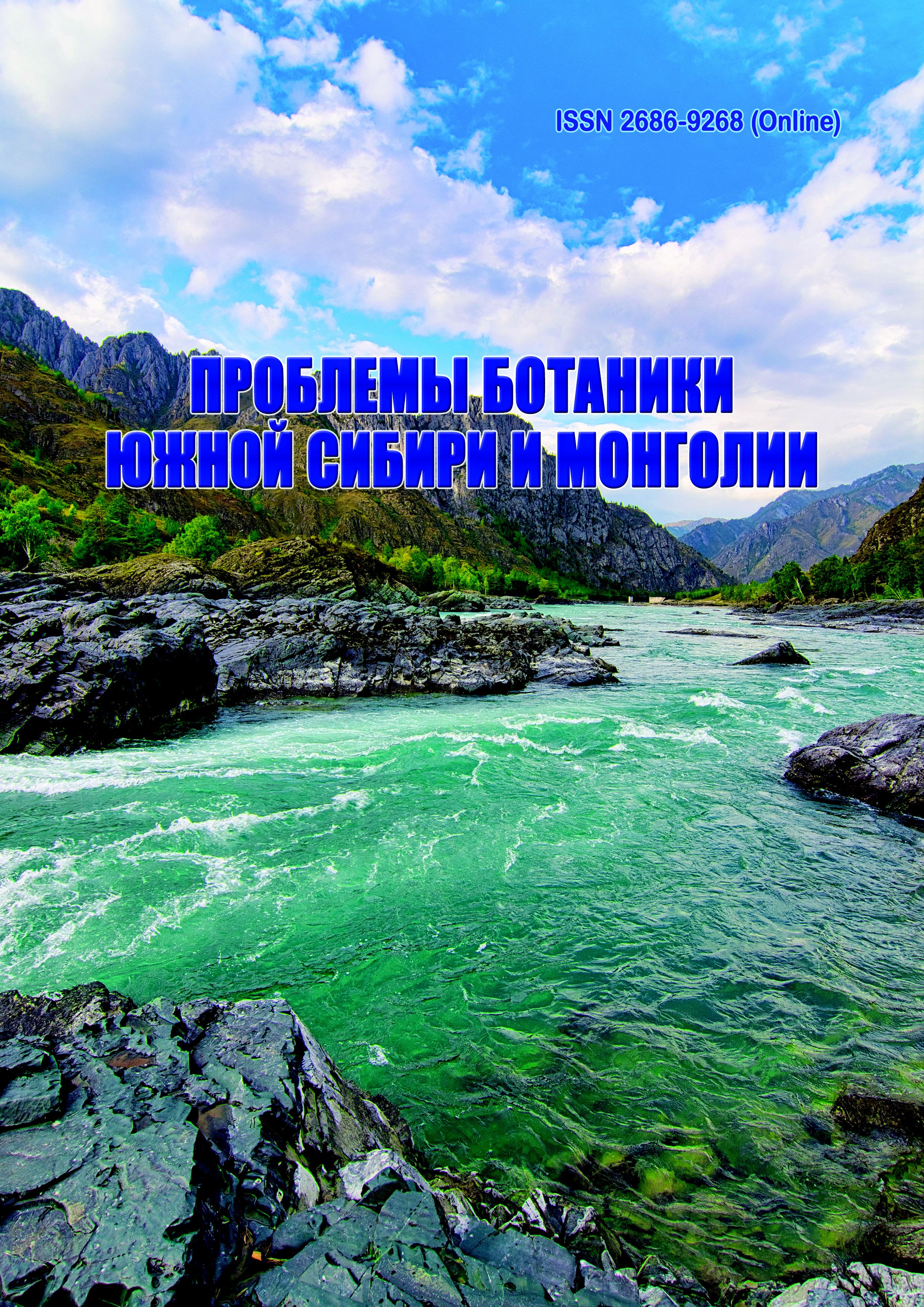Seasonal dynamics of the photosynthetic apparatus parameters of upright and prostrate pine species using the example of Pinus sibirica and P. pumila
УДК 582.475.4:581.132.1
Abstract
The seed progeny photosynthesis intensity and the photosynthetic apparatus state of genus Pinus species of different life forms were studied in seasonal dynamics: P. sibirica is an upright tree, P. pumila is a prostrate species. The seed progeny age was twelve years old. The photosynthesis intensity of both species increased from May to July, was maximum in July and amounted to 9.2 mg CO2 mg-1 fr. m. h-1 in Siberian stone pine and 7.8 mg CO2 mg-1 fr. m. h-1 in Siberian dwarf pine, in August the assimilation activity began to decrease in both species. Studies have shown that in summer P sibirica had photosynthesis values 15-20 % higher than those of P pumila. In the winter months, the chlorophyll content did not differ significantly between the species; at the same time, during the growing season, Siberian stone pine contained more photosynthetic pigments than Siberian dwarf pine. An assessment of the photosynthetic apparatus functional activity showed that the seasonal dynamics of the maximum quantum yield photochemistry (Fv/Fm) of photosystem II (PSII), the real quantum yield of PS II ^psII) in both species had a similar character: Fv/ Fm sharply decreased from November to February, increased from March to June, reached its maximum values and practically did not change in June-Septem-ber and decreased in October. The electron transport rate (ETR) was minimal from November to April, increased sharply in May, and had maximum values in May, June, and July. In August, a significant decrease in ETR was observed. The rate of electron transport significantly differed between species in May-September and was significantly higher in Siberian stone pine. The shown differences between the P sibirica - upright species, compared to P. pumila - prostrate species, indicate species specific physiological parameters.
Downloads
Metrics
References
Гольцев В. Н., Каладжи Х. М., Паунов М., Баба В., Хорачек Т., Мойски Я., Коцел Х., Аллахвердиев С. И. Использование переменной флуоресценции хлорофилла для оценки физиологического состояния фотосинтетического аппарата растений // Физиология растений, 2016. - Т. 63, № 6. - С. 881-907.
Соловченко А. Е., Мерзляк М. Н. Экранирование видимого и УФ излучения как механизм фотозащиты у растений // Физиология растений, 2008. - Т. 55, № 6. - С. 803-822.
Trenberth K. E. Changes in precipitation with climate change // Climate reseach, 2011. - Vol. 47. - Р. 123-138.



